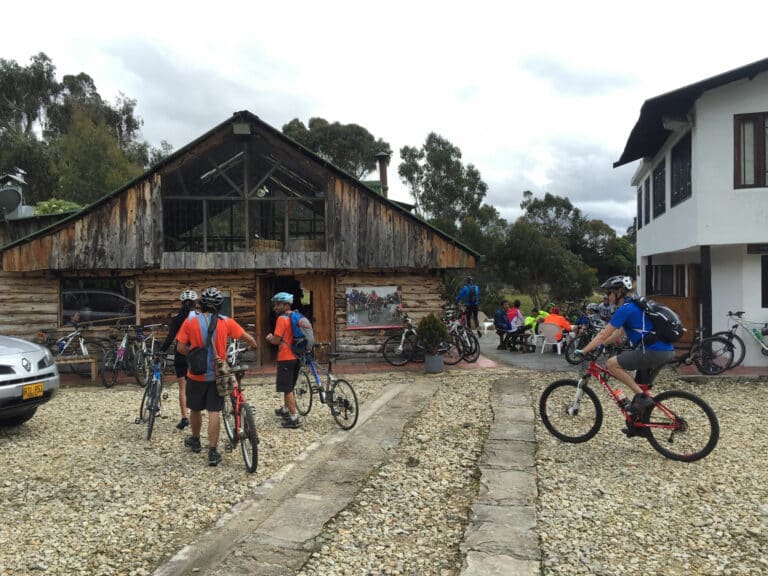Can cyclists overcome the obstacles of pedaling to work?
Road rage can strike anywhere—even Portland, Oregon, continuously rated the most bike-friendly city in America. Last summer, Portland bicycle commuter Jason Rehnberg chided a reckless driver passing him. Suddenly he found himself splayed across the hood of a moving Ford Escort, holding on for dear life.
Rehnberg yelled at driver James Millican for going too fast on a residential street, but the cyclist’s shout for safety quickly turned dangerous. Millican screeched his breaks, and after a little game of cat and mouse, he floored it toward Rehnberg, who ended up on the hood of the car, clenching the rim below the windshield for three blocks. A witness filmed video of the incident, which received national attention.
Millican was recently sentenced to 45 days in jail. Rehnberg was uninjured, and despite his brush with serious harm, he feels he did the right thing confronting Millican in the name of cycling safety.
“This guy was going way, way, way too fast, and I’m not going to back down from that,” he said after the incident in The Oregonian.
It’s incidents like this that could be keeping people in their cars. Bike commuting is a simple, healthy way for people to reduce their carbon footprint and save money in the wake of volatile fuel costs. According to the EPA, the transportation sector is the second largest source of carbon emissions in the U.S., and two thirds of those emissions come from automobiles and light-duty trucks. Even though mainstream eco-awareness is growing, the growth of bike commuting remains relatively stagnant. About 650,000 (0.48 percent) American workers get to the office by bike, and that percentage has barely fluctuated in the past 20 years, according to the U.S. Census Bureau.
According to the advocacy group Bikes Belong, a slight increase in this number could make a big difference for the environment. If the country’s total number of bike trips increased to just 1.5 percent, the United States could save 462 million gallons of gasoline every year. Also, a 10-mile bike commute eliminates 10 pounds of carbon emissions, while the rider burns 360 calories—helping to combat the American obesity epidemic and our oil addiction at the same time.
But it can be unnerving to pedal to work—especially in the Southeast, which lacks the bicycle infrastructure and popular support. According to the latest annual bike safety rankings by the League of American Bicyclists, states in the Southeast rank at the bottom. West Virginia was rated dead last on the list, just after Georgia and Alabama.
Cyclist fatalities are about two percent of total traffic-related deaths in the U.S. In 2006, there were 773 bikers killed, another statistic that has been relatively consistent over the past decade.
Despite all of the safety hazards that have stymied bike commute growth, there have been recent efforts at the local and national level to make pedaling easier. Congressman Earl Blumenauer (D-Ore.) has been the biking community’s biggest advocate in Washington since he entered the halls in 1996. He’s a big part of the reason his hometown of Portland has become a model for bike infrastructure. Last March, Blumenauer introduced the National Bike Bill, which aims to create a national network of interconnected urban and rural bikeways “providing valuable community benefits, including low- or no-cost recreation and alternative transportation options for people of all ages and abilities.”
And last May, the first professional bike share program in the country was launched in Washington, D.C. Smartbike D.C. offers 100 share-use bicycles at 10 locations throughout city’s business district for an annual fee of $39. The program, started jointly by Clear Channel Outdoor and the District Department of Transportation, was modeled after successful programs in Europe where bike commuting has a much safer record. The District also offers a map with specific bike routes and paths.
In Roanoke, Va., a similar program was launched recently by James Rosar. Sharebike offers cheap rental bikes out of a central downtown location and lets bikes be returned at kiosks located around town. Rosar is also an instructor with the League of American Bicyclists, so he helps riders find the safest routes and offers tips on proper cycling.
“There’s a feedback thing that happens between a rider and a driver,” he says. “The more riders tend to cower in gutters and encourage drivers to come alongside them, the more the rider runs out of room. The more a cyclist acts as a vehicle, the more they’re likely to get the respect of a driver. Sometimes you have to take the lane.”
Rosar previously worked as a bike messenger in New York City, so he’s had some of the best experience possible in dealing with vehicle traffic. He tells bikers to worry less about the traffic behind them and worry more about their own actions as an equal vehicle. The Washington Area Bicycle Association echoes this advice, noting that bikers fare best when they act like vehicles. It is obviously important to know and follow the rules of the road—ride on the right with the flow of traffic—and obey all traffic signals. Also make sure to assertively and clearly signal when you intend to turn or change lanes.
“The best thing I learned was to be predictable and work within the rules of the road,” Rodar says. “If you’re following the rules, it’s much less likely that you are going to have trouble.” •








